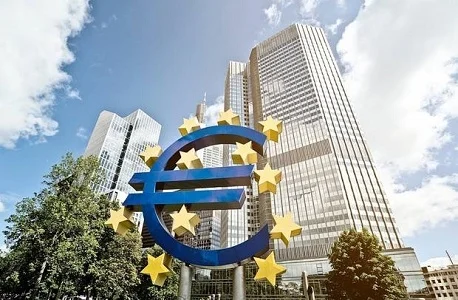ANALYSIS: Europe set for EMIR 3.0 active account reforms in 2025
19th June, 2024 | Luke Jeffs

The EMIR 3.0 regulation was agreed in February by the European Commission, European Council and European Parliament, paving the way for the European Securities and Markets Authority (ESMA) to draft the technical standards
Eurex hosted on June 13 a panel discussion which considered the practical implications of the EMIR 3.0 regulation designed to force European interest rate derivatives clearing to shift from London into the Europe.
The regulation, which has been discussed for years since the UK’s Brexit decision in 2016, was finally agreed in February by the European Commission, European Council and European Parliament, paving the way for the European Securities and Markets Authority (ESMA) to draft the technical standards, expected later this year.
The consensus agreement requires that EU market participants subject to the clearing obligation that also meet certain clearing thresholds in Euro or Polish Zloty interest rate derivatives have an active clearing account with a European central counterparty (CCP).
An “active account” is defined by three operational criteria and a fourth that refers to the size of the market participant, explained Viktoria Hackenberg, vice president of regulatory affairs at Deutsche Boerse.
She told the delegation: “Under those operational criteria, they need to ensure the account is set-up by proving they have the IT connectivity, the legal documentation and internal processes but they also need to ensure they have the systems and resources in place to take on large volume from the UK even at short notice. Lastly, they need to ensure that new business can be cleared in the EU at any time.”
Hackenberg added: “The fourth criteria is the representativeness criterion which implies a certain level of activity in EU accounts depending on the size of the firm. It requires firms to mirror to some extent the portfolio they have in the UK on the continent as firms will need to clear at least five trades in the relevant sub-categories of the products that are in scope of the regime in a specific reference period.”
Small firms are treated differently under the regulation, meaning they need to clear less than larger entities while very small firms and client clearing services are exempted altogether from the representativeness criteria.
Following the agreement in February, the European Commission expressed frustration that the regulation did not go further but Hackenberg said the consensus is “a good balance between the regulators’ financial stability concerns and the industry’s competitiveness concerns”.
Looking ahead, Hackenberg said the legislative text needs to be “cleaned up” and translated into all of the official EU languages.
“Once this process is concluded, the finalised legal text still needs to be rubber-stamped. This will only happen when the new European Parliament has picked up its work so the final adoption of the legislative text is expected to take place after the summer recess.
“Once adopted and published in the official journal, EMIR 3.0 will automatically enter into force 20 days later. Some of the provisions will only apply however after a transition period and this is particularly relevant for the active account requirement,” Hackenberg added.
The legislative text suggests a six month transitional period during which ESMA will have to provide all the specifications for the application of the new requirement.
Hackenberg concluded: “We expect to see the draft RTSs for public consultation as soon as the legislative text has been published, which is expected for the fourth quarter this year and would mean that the active account requirement would kick-in in the second quarter next year.”
She added: “So while Brussels is taking the last steps in the legislative process and ESMA is preparing the level two work, the industry is also eager to understand better the new EMIR requirements and to start getting ready.”
Jamie Gavin, managing director, head of prime brokerage clearing, EMEA at Societe Generale, said firms subject to the new regulation need to start thinking now about how they are going to get ready for next year.
Gavin said : “There has been build-up to this legislation for a large period of time, now we’re there and we know the shape of some of the requirements for clients and us as clearing brokers, we still don’t know the detail and we’re going to have to wait probably six months for the regulatory technical standards before we really know what the implementation requirements are going to be.”
He continued: “That said, there are some basic steps that clients can start to make. First, if you’re a cleared over-the-counter client, you need to open an account at Eurex or another EU CCP to make sure you have access to Euro and Polish clearing on an EU domiciled CCP. If you’re an ETD (exchange-traded derivative) client trading short term interest rates (STIRs) you need to check with your clearing broker to make sure you have the set-ups to ensure you can clear those at an EU CCP as well.”
While the active account requirement has attracted most attention, there are other aspects of EMIR 3.0 that firms need to think about, according to Roland Scheinert, a partner at PWC Germany.
“You also need to consider that there are other requirements that will kick-in at a later date once the active account requirement has taken effect. The reporting requirement, for example, will kick-in for most firms six months after that so there should be time to prepare. But this all hinges on how quickly ESMA can publish the details everyone is waiting for,” said Scheinert.
Firstly, firms must demonstrate and report on a regular basis to their national regulator that they are complying with the representativeness requirements for example.
“Second, there will be regular reporting obligations around the so-called operations conditions, such as legal documentation and IT connectivity. Third, firms need to report on an annual basis on their clearing activity with third-country CCPs.
“The regulation will also include a new penalty regime for the EMIR Article 9 reporting, which might give us a hint that regulators and supervisors also intend to use this data to monitor compliance.”
Speaking earlier in the programme, Matthias Graulich, executive board member of Eurex Clearing, said Europe’s political and regulatory interests go hand-in-hand with Eurex’s ambition to become the home of the Euro yield-curve.
Graulich said: “We provide the tools and the financial market infrastructure to support achieving the bigger political and regulatory objectives and it has a positive effect in both directions.”
Eurex currently has partnership programmes in place to incentivise more interest rate swaps clearing and short-term interest rate (STIR) derivatives trading to take place in Frankfurt.
Graulich said: “While without our initiative, this political and regulatory objective would be hard to achieve, we see at the same time that EU market participants in particular assign a high priority to these initiatives such as moving swaps or STIRs.”
He added: “Then our strong value proposition through margin, capital and collateral as well as operational efficiencies come into play and creates a situation that people are adhering to regulatory requirements and most participants at the same type increase their efficiencies.”


